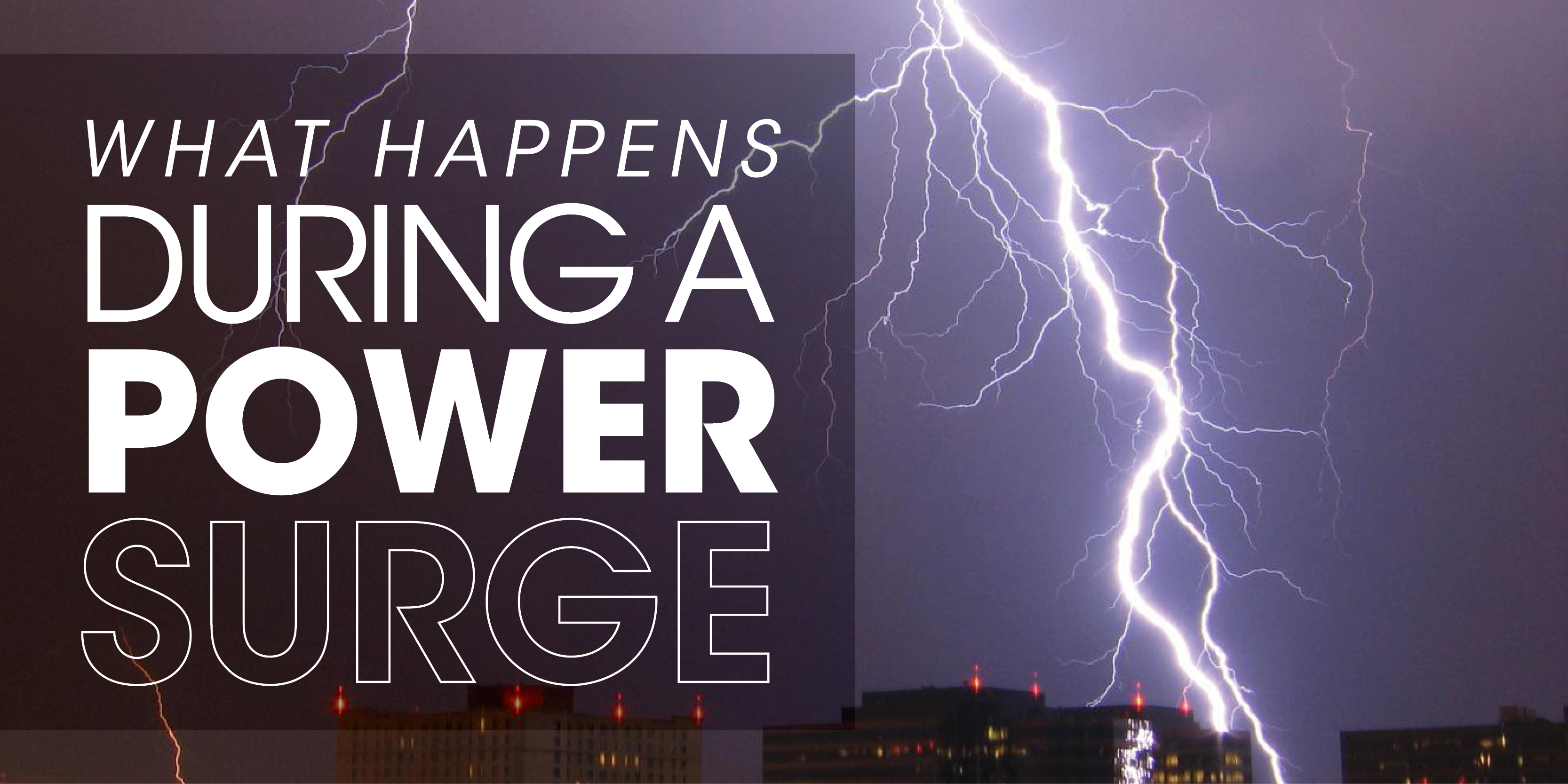What Happens During a Power Surge?

A power surge – or increase in voltage that significantly exceeds the standard 120-volt flow of electricity into a home or building – can cause tremendous damage to electronics, appliances, air conditioning units, and heating systems. Like a jolt to the heart, a power surge can carry thousands or tens of thousands of volts into your home’s wiring. That’s enough to crash computer hard drives, fry circuit boards and ruin home entertainment systems.
How Damaging are Power Surges?
In one example, lightning struck a utility pole in Acton, Massachusetts and sent a tidal wave of voltage surging into a nearby house. It burned out the refrigerator’s motherboard, took out the oven’s temperature controls, and fried six dimmer switches, two computers and every GFCI outlet in the house.
The homeowners had recently rewired their home and opted out of whole-house power surge protection to save a few hundred dollars. Unfortunately, this incident caused $11,000 worth of damage in a few millionths of a second.
Conditions that Cause a Power Surge
Not all power surges are created equal. Their impact depends on the conditions that cause the surge in the first place.
Lightning
The right atmospheric conditions make for some of the most powerful surges ever recorded. If lightning strikes within a mile of your house, 200,000 amps could course through your 20-amp wiring, burning and melting it in a heartbeat. While this is the most feared type of power surge, it’s also the rarest.
Downed Power Lines
Storms can also down power lines, which are typically associated with power outages. However, the voltage can fluctuate wildly, causing intermittent surges before the power goes out.
Less Dramatic Causes
Changes in electricity use at a nearby factory or the powering on and off of high energy-guzzling appliances in your home can cause minor, instantaneous power surges. You might not even notice them. A light could flicker slightly, but these power surges usually aren’t even enough to trip a circuit breaker. However, even these small surges take their toll on appliances eventually, sometimes causing them to fail prematurely.
How to Protect Your Home Against Power Surges
Many homeowners believe achieving full protection from power surges involves nothing more than plugging the computer into a power strip. However, as seen in the example above, many more appliances than just your computer can be affected by a powerful surge. Plus, some power strips are just that – extension cords with additional outlets and no actual surge protection.
The first step to protect your home against power surges is to make sure your plug-in devices provide adequate protection. Under normal circumstances, computer surge protectors allow power to flow through them like normal. But if they detect high voltage, they react nearly instantaneously, directing excess voltage into the ground wire. Assuming the surge protector’s fuse isn’t damaged by excessively high voltage, the normal flow of electricity is restored.
The second step is to install two whole-house surge protectors – one for the electric wiring and another for the phone and cable lines. This solution is more expensive than plug-in surge protectors – which act as a buffer for voltage that slips past the whole-house suppressors – but the peace of mind it brings is well worth the investment.
If your heating and air conditioning equipment recently suffered damage from a power surge, contact Aire Serv® to schedule a timely repair.
For Further Reading:
What's That Smell? AC Vent Smells and What They Mean
 Click to call
Click to call


